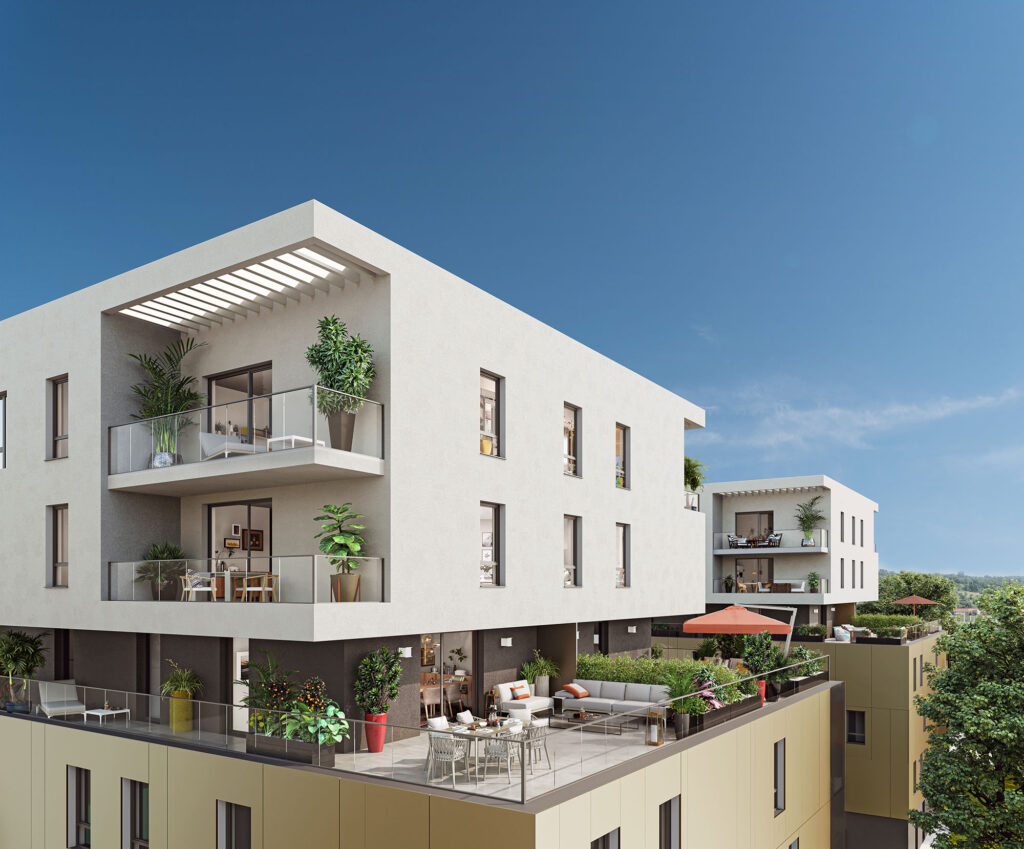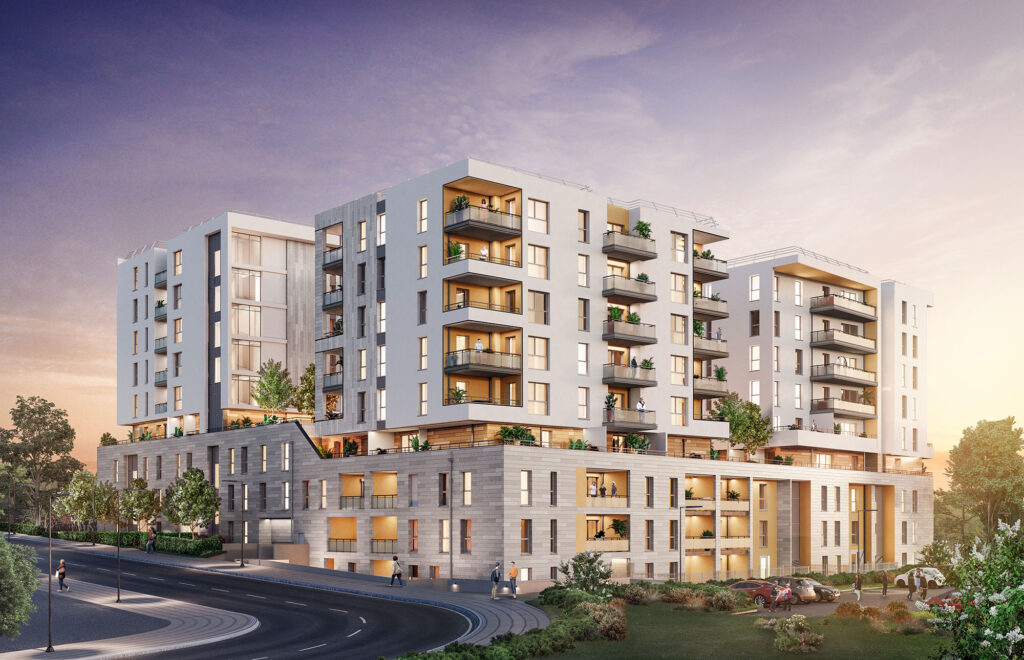Are you looking for software to create real estate renderings? Blender may be just what you're looking for. This 3D modeling and animation software is widely used to create 3D real estate visuals.
Blender is appreciated for its accessibility and high-quality rendering. From simple modeling to the creation of 3D animations, this tool has a lot to offer. Discover Blender's real estate use cases, its benefits, and how to install it.
How can Blender be used in the real estate sector?

Blender is a CAD program that is particularly useful for 3D modeling, creating realistic renderings and interactive property tours.
3D modeling of real estate projects
3D modeling is a representation of an existing property, or of a project in the design phase.
Importing elements
As 3D modeling software, Blender can create exterior elements such as external walls, balconies and roofs. It can also create interior elements such as doors, windows, floors and staircases.
These elements can be imported from other software such as SketchUp's 3D Warehouse, TurboSquid, Sketchfab and Free3D. But to avoid copyright infringement, remember to check the license for each downloaded object.
You can also import photos of real objects such as furniture, plants or other decorative elements. Blender is ideal for integrating real elements into a virtual environment.
Representation of the real estate project
For real estate professionals, 3D modeling is an essential step in the digital visualization of a property. It consists of representing a house or apartment as a three-dimensional image.
3D modeling with Blender lets you imagine the future property to be offered for sale. What's more, this 3D architecture software features ArchiMesh functionality, enabling the creation of technical plans.
Although it's not its main function, this option is of real benefit to the design of architectural projects. As well as facilitating design, it improves communication between stakeholders.
Photorealistic 3D renderings of real estate assets
Blender's functionality doesn't stop at simple 3D modeling. The software is also capable of creating photorealistic renderings of real estate to captivate your audience.
Texturing and lighting
To bring scenes to life, Blender provides a range of texturing tools. Existing textures and materials can be imported from external sites. More experienced users, however, prefer to create their own textures using the Shader Editor feature.
This allows you to achieve a unique, personalized rendering of the property. Blender also offers tools for optimizing scene lighting. You can also adjust light and apply shadows. The software offers different types of light, namely :
- Point: spherical point light source that spreads the same amount of light in all directions
- Spot: cone-shaped light emitted from the tip of the cone in one direction
- Sun : light acting like the sun and providing constant intensity in a single direction
- Area: light emitted by a surface, e.g. screen, neon lights, windows.
Once you've added the details, you can import your final render with the Cycles rendering engine. This engine is based on ray-tracing and is designed for photorealistic rendering.
Real estate marketing assets
Blender renderings are impressively realistic. Potential buyers can visualize the property as if they were actually there. They can see the layout of the furniture, the color of the walls, the texture of the floor, the lighting and the interior decorations.
Photorealistic 3D real estate renderings are genuine marketing tools designed to attract customers. They are also a guarantee of professionalism for the developer or real estate agent. Blender can create visuals in a variety of formats to suit different platforms: websites and social networks.
Interactive virtual tour of the building complex
Blender software is designed to create fluid, high-quality animations, guaranteeing an immersive experience.
Immersive tour creation
To create an immersive experience, Blender integrates animation andspecial effects functionalities. From 3D models and renderings, you can add animations and create camera movements. This enables you to create interactive virtual tours or 360° videos of real estate. What's more, Blender supports the most common file formats for virtual reality, such as FBX and OBJ.
Benefits of virtual tours
Creating an interactive virtual tour of a property allows you to :
- 360° room view
- Attracting more customers, even abroad
- Reduce the cost of physical visits
- Helping customers project their future home
Why use Blender for real estate rendering?
Blender is a versatile tool that offers many advantages when it comes to creating realistic real estate renderings.
Accessibility
Blender is totally free. Installing it gives you access to the full range of 3D modeling and animation tools.
It's also open source, making it possible to program and install extensions (plug-ins and add-ons). While the software is free, extensions are generally chargeable.
The functionality of this software is bound to increase, thanks to the active community of developers at its core. The release of its source code allows developers to add increasingly advanced tools to enhance Blender's capabilities.
All-in-one software
Blender offers a host of features of interest to 3D real estate designers:
- Modelling: create, move, duplicate or subdivide different shapes
- UV unfolding: prepares a 3D object for texturing
- Create renderings with the different types of integrated rendering engines: Cycles, Eevee and Workbench
- Animation: objects, lighting and cameras can be animated
Ease of use
For those with a basic understanding of 3D modeling software, Blender is an easy-to-use tool. Its intuitive interface makes it easy to learn. Since Blender has been around for quite some time, there are plenty of resources for getting started with the software.
In addition to the many free tutorials, there are discussion forums where you can get tips and tricks for using the software.
The software also has the advantage of being compatible with Windows, Mac and Linux. The integration of Python programming functions speeds up and automates certain modeling steps.
How do I install Blender?

To install Blender, go to the official website and choose the version best suited to your operating system: Windows or Mac OS. Then download the file and start installing Blender by following the steps indicated.
English is the default language used by the software, so set it to French. To do this, go to the "Edit" tab and click on "Preferences". Then go to the "Interface" tab in the new window.
Click on the "Translation" sub-section, then "Language", before choosing French. All that remains is to save your preferences. By checking the Tooltips box, you can keep the interface in English while displaying the explanations in French.
Need real estate renderings? Call on our 3D design studio CTA








